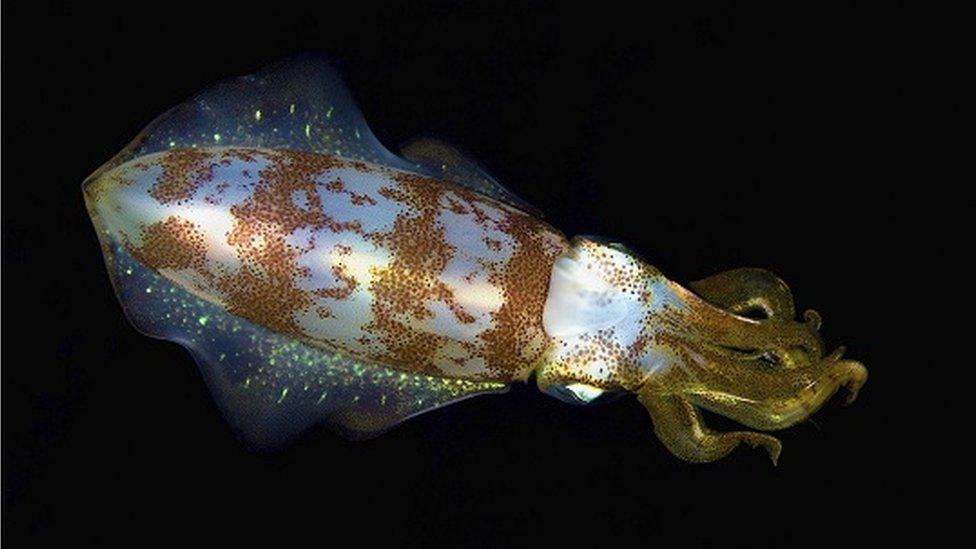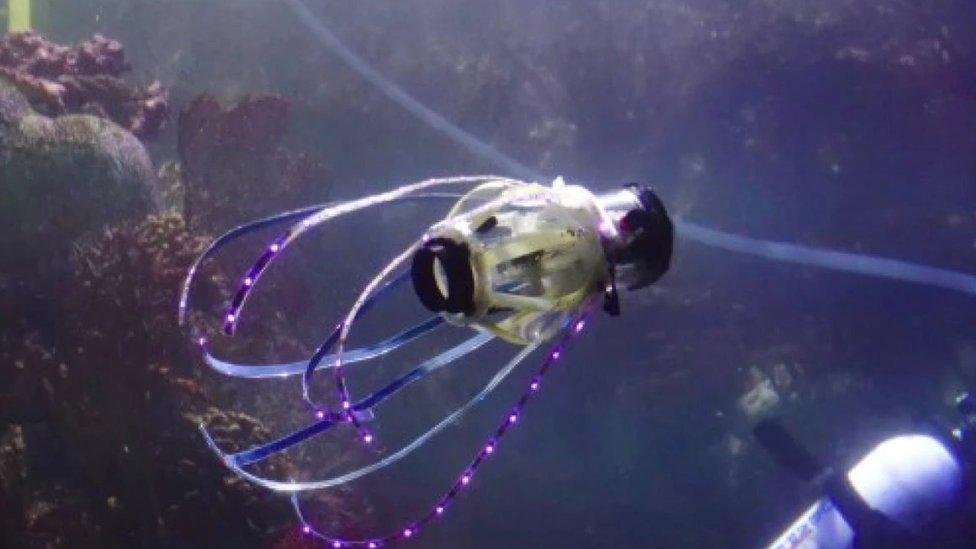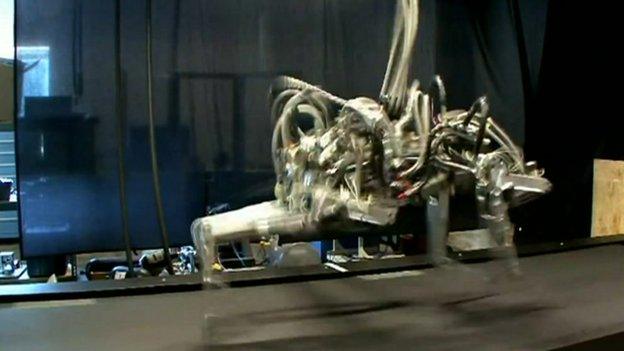Meet the squidbot hoping to explore the deep sea
- Published
- comments
California's swimming 'squidbots'
We've told you before about robotic dolphins, bionic birds and a sloth bot, and now a robot squid is set to join the list.
It was built by researchers at the University of California San Diego, to explore the sea and take pictures of fish and coral.
It can swim by itself, moving forward by generating jets of water from a power source inside its body.
It can also carry a sensor, such as a camera, for underwater exploration.

Not a robot, a real squid
Squid can move much faster than other sea invertebrates like octopus, cuttlefish, or nautilus, due to how they take water in and pump it out through their bodies
To create the squidbot the team studied how real life squid move around under water and then "recreated all the key features that squids use for high-speed swimming".
The robot can reach travel around 18 to 32 cm per second, which is roughly half a mile per hour.

They say this is faster than most other soft robots, but slower than real squid who can travel at between 23 and 25 miles per hour.
This squid robot is made mostly from soft materials such as acrylic polymer, with a few rigid, 3D printed and laser cut parts as a skeleton.
Using soft robots in underwater exploration is important to protect fish and coral, which could be damaged by hard materials.
But soft robots tend to move slowly and have difficulty manoeuvring themselves around.

When it's not in the water the squidbot is shaped roughly like a paper lantern, and has flexible ribs, which act like springs, along its sides.
The researchers first designed the robot to swim in a tank, before testing it in a larger aquarium.
Caleb Christianson, who led the study said after testing the robot in a tank "it was especially exciting to see that the robot was able to successfully swim in a large aquarium among coral and fish", which shows how it could be used in a real ocean.
- Published14 July 2020

- Published13 March 2014

- Published22 May 2020

